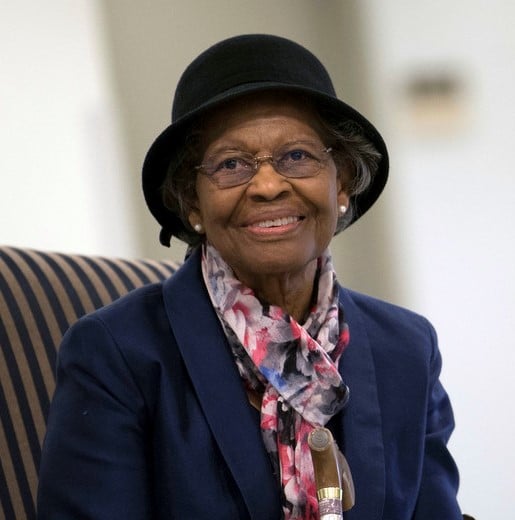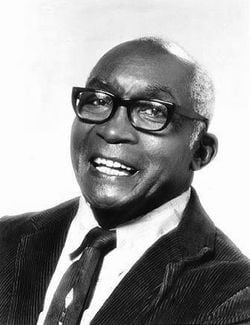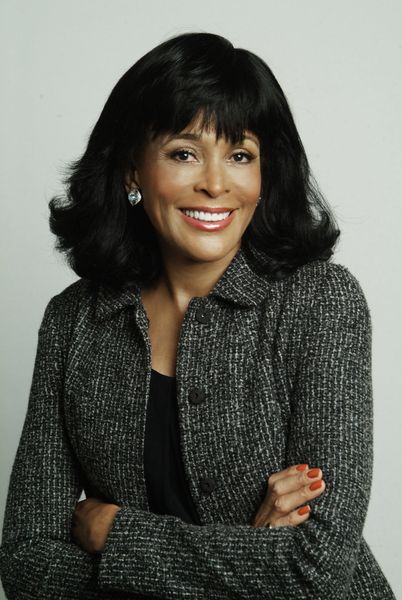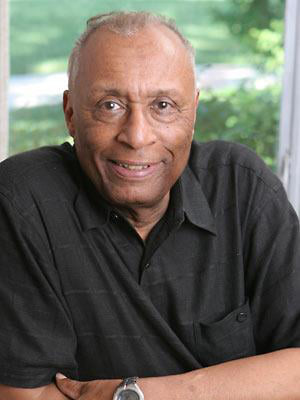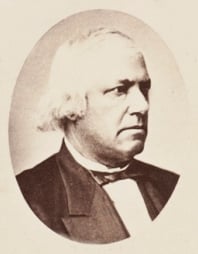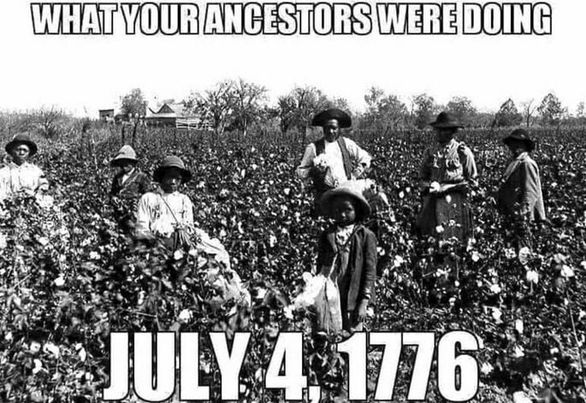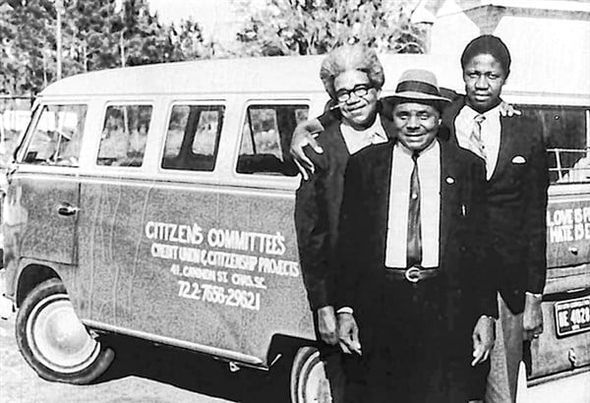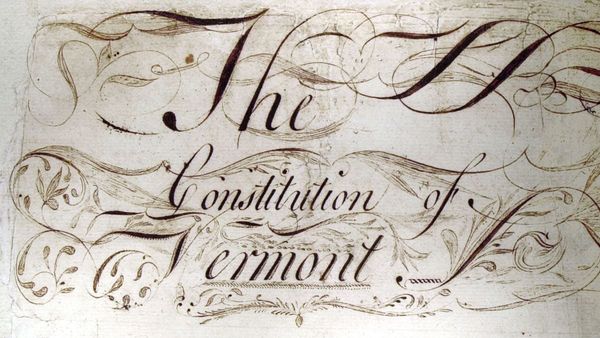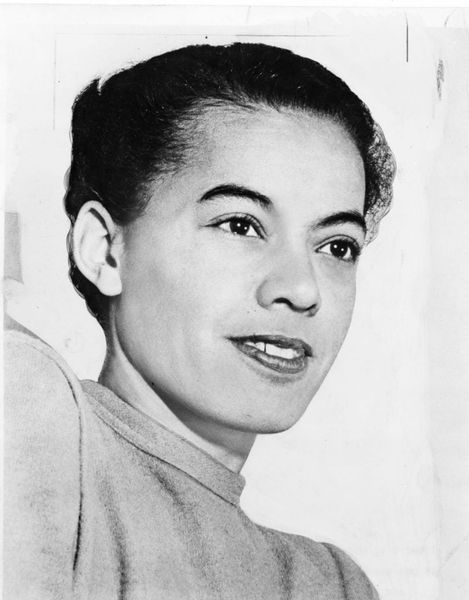GM – FBF – Today’s American Champion is an American mathematician known for her contributions to the mathematical modeling of the shape of the Earth, and her work on the development of the satellite geodesy models that were eventually incorporated into the Global Positioning System (GPS). She was inducted into the United States Air Force Hall of Fame in 2018.Today in our History – July 10, 1932 – Gladys Mae West (née Brown; born 1930) was born.West was born as Gladys Mae Brown in Sutherland, Virginia, in Dinwiddie County, a rural county south of Richmond. Her family was an African-American farming family in a community of sharecroppers. Her mother worked at a tobacco factory, and her father was a farmer who also worked for the railroad. West realized early on that she did not want to work in the tobacco fields or factories like the rest of her family, and decided that education would be her way out. At West’s high school, the top two students of each graduating class received full-ride scholarships to Virginia State College (now formally University), a historically black public university. West worked hard and graduated in 1948 with the title of valedictorian. She was initially unsure what college major to pursue at VSU, as she had excelled in all her subjects in high school. She was encouraged to major in science or math because of their difficulty, and West ultimately chose to study mathematics, a subject mostly studied at her college by men. She also became a member of the Alpha Kappa Alpha sorority. West graduated in 1952 with a Bachelor of Science in Mathematics. After graduating, she taught math and science for two years in Waverly, Virginia. West then returned to VSU to complete her Master of Mathematics degree, graduating in 1955. Afterward, she briefly took another teaching position in Martinsville, Virginia. In 1956, West was hired to work at the Naval Proving Ground in Dahlgren, Virginia, (now called the Naval Surface Warfare Center), where she was the second black woman ever hired and one of only four black employees. West was a programmer in the Naval Surface Warfare Center Dahlgren Division for large-scale computers and a project manager for data-processing systems used in the analysis of satellite data. Concurrently, West earned a second master’s degree in public administration from the University of Oklahoma. In the early 1960s, she participated in an award-winning astronomical study that proved the regularity of Pluto’s motion relative to Neptune.Subsequently, West began to analyze data from satellites, putting together altimeter models of the Earth’s shape. She became project manager for the Seasat radar altimetry project, the first satellite that could remotely sense oceans. West consistently put in extra hours, cutting her team’s processing time in half. She was recommended for a commendation in 1979. From the mid-1970s through the 1980s, West programmed an IBM computer to deliver increasingly precise calculations to model the shape of the Earth – an ellipsoid with irregularities, known as the geoid. Generating an extremely accurate model required her to employ complex algorithms to account for variations in gravitational, tidal, and other forces that distort Earth’s shape. West’s data ultimately became the basis for the Global Positioning System (GPS). In 1986, West published Data Processing System Specifications for the Geosat Satellite Radar Altimeter, a 51-page technical report from The Naval Surface Weapons Center (NSWC). The guide was published to explain how to increase the accuracy of the estimation of geoid heights and vertical deflection, important components of satellite geodesy. This was achieved by processing the data created from the radio altimeter on the Geosat satellite, which went into orbit on March 12, 1984. West worked at Dahlgren for 42 years, retiring in 1998. After retiring, she completed a PhD in Public Administration from Virginia Tech.West’s vital contributions to GPS technology were rediscovered when a member of West’s sorority Alpha Kappa Alpha read a short biography Gladys had submitted for an alumni function. West was inducted into the United States Air Force Hall of Fame in 2018, one of the highest honors bestowed by Air Force Space Command (AFSPC). The AFSPC press release at the time called her one of “the so-called ‘Hidden Figures’ part of the team who did computing for the US military in the era before electronic systems” – a reference to the 2016 book by Margot Lee Shetterly, which was adapted into the film Hidden Figures. Capt. Godfrey Weekes, commanding officer at the Naval Surface Warfare Center Dahlgren Division in 2018, described the role played by West in the development of Global Positioning System: “She rose through the ranks, worked on the satellite geodesy, and contributed to the accuracy of GPS and the measurement of satellite data. As Gladys West started her career as a mathematician at Dahlgren in 1956, she likely had no idea that her work would impact the world for decades to come.” West agreed, saying that she had no idea at the time that her work would affect so many: “When you’re working every day, you’re not thinking, ‘What impact is this going to have on the world?’ You’re thinking, ‘I’ve got to get this right.'”West was selected by the BBC as part of their 100 Women of 2018. As an alumna of Virginia State University Dr. Gladys West was nominated and won the award for “Female Alumna of the Year” at the Historically Black Colleges and Universities Awards sponsored by HBCU Digest in 2018. She met her husband Ira West at the Naval Surface Warfare Center Dahlgren Division, where he also worked as a mathematician. They were two of only four black employees at the time. They were married in 1957. They have three children and seven grandchildren. As of February 2018, West lives in King George County, Virginia. In 2018, West completed a PhD via a distance-learning program with the School of Public and International Affairs at Virginia Tech. West continues to prefer using a paper map over a tracking system, saying she still trusts her brain above all. She stated, “I’m a doer, hands-on kind of person. If I can see the road and see where it turns and see where it went, I am more sure. Research more about this great American Champion and share it with your babies. Make it a champion day!
Month: July 2021
GM – FBF – Today’s American Champion was an American composer, songwriter, arranger, choral conductor, and actor.
GM – FBF – Today’s American Champion was an American composer, songwriter, arranger, choral conductor, and actor. He was regarded as a leading expert on Negro spirituals and choral music. His notable compositions include “Amen,” a gospel-tinged theme from the film Lilies of the Field and a 1963 hit for The Impressions, and the Christmas song “Mary’s Boy Child”.Today in our History – July 9, 1901 – Jester Joseph Hairston (July 9, 1901 – January 18, 2000) was born.Hairston was born in Belews Creek, a rural community on the border of Stokes, Forsyth, Rockingham and Guilford counties in North Carolina. His grandparents had been slaves. At an early age he and his family moved to Homestead, Pennsylvania, just outside Pittsburgh, where he graduated from high school in 1921. Hairston was still a small child when his father died in a job-related accident; he was raised by his grandmother while his mother went to work.While growing up, Hairston heard his grandmother and her friends talking and singing about life on the plantations of the southern US. He listened with immense interest and made a promise to himself that he would preserve this history through music.Hairston initially majored in landscape architecture at Massachusetts Agricultural College in the 1920s. While studying landscape architecture, Hairston became involved in various church choirs and choral groups. The accompanist of one, Anna Laura Kidder, saw his potential in music and became his benefactor. Mrs. Kidder offered him financial assistance to study music at Tufts University, from which he graduated in 1929. He was one of the first black students admitted to Tufts. Later he studied music at the Juilliard School.Hairston pledged Kappa Alpha Psi fraternity, Chi chapter in 1925. He worked as a choir conductor in the early stages of his career. His work with choirs on Broadway eventually led to his singing and acting in plays, films, radio programs, and television shows.He sang with the Hall Johnson Choir in Harlem for a time but was nearly fired from the all black choir because he had difficulty with the rural dialects that were used in some of the songs. He had to shed his Boston accent and relearn the country speech of his parents and grandparents. Johnson had told him, “We’re singing ain’t and cain’t and you’re singing shahn’t and cahn’t and they don’t mix in a spiritual.” The Hall Johnson Choir performed in many Broadway shows including The Green Pastures. In 1936, they were asked to go to Hollywood to sing for the film The Green Pastures. At that time, a Russian composer, Dimitri Tiomkin, heard Jester and invited him to collaborate with him. This led to a thirty-year collaboration during which time Jester arranged and collected music for the movies. In 1939, Hairston married Margaret Swanigan. He also wrote and arranged spirituals for Hollywood films as well as for high school and college choirs around the country.Hairston wrote the song “Mary’s Boy Child” in 1956. He also arranged the song “Amen”, which he dubbed for the Sidney Poitier film Lilies of the Field, and arranged traditional Negro spirituals Most of Hairston’s film work was in the field of composing, arranging, and choral conducting. Hairston also acted in over 20 films, mostly in small roles, some of which were uncredited. Among the films he appeared in were bit parts in some of the early Tarzan movies, St. Louis Blues, The Alamo, To Kill a Mockingbird, In the Heat of the Night, Lady Sings the Blues, I’m Gonna Git You Sucka and Being John Malkovich. Hairston starred in John Wayne’s The Alamo (1960).In 1961, the US State Department appointed Jester Hairston as Goodwill Ambassador. He traveled all over the world teaching and performing the folk music of the slaves. In the 1960s he held choral festivals with public high school choirs, introducing them to Negro Spiritual music, and sometimes leading several hundred students in community performances. His banter about the history of the songs along with his engaging personality and sense of humor endeared him to many students.No matter where Hairston performed in the US, he checked the phone book for other Hairstons and was responsible for reuniting people on his family tree, both black and white.He composed more than 300 spirituals. All of his research and work has been documented for history. He was the recipient of many honorary doctorates, including a doctorate from The University of Massachusetts in 1972, and another in music from Tufts in 1977.Hairston appeared on TV’s The Amos ‘n’ Andy Show. He had the role of Leroy on the radio program and as Henry Van Porter on the television program. He also played the role of Wildcat on the show That’s My Mama. In his senior years he appeared on the show Amen as Rolly Forbes. His last television appearance was in 1993 on an episode of Family Matters. Hairston also played the role of “King Moses” on radio for the Humphrey Bogart and Lauren Bacall show Bold Venture.In his later years, Hairston served as a cultural ambassador for American music, traveling to numerous countries with choral groups that he had assembled. In 1985 he took the Jester Hairston Chorale, a multi-racial group, to sing in the People’s Republic of China, at a time when foreign visitors were still quite rare in that country.Hairston died in Los Angeles of natural causes in 2000 at age 98. For his contribution to the television industry, Hairston has a star on the Hollywood Walk of Fame located at 6201 Hollywood Blvd.. Research more about this great American Champion and share it wit He is interred at Inglewood Park Cemetery, Inglewood, Californiah your babies and make it a champion day!
GM – FBF – Today’s American Champion is an American reproductive rights activist who was the first African American and the youngest president ever elected of Planned Parenthood Federation of America, and the first woman since Margaret Sanger to hold the position.
GM – FBF – Today’s American Champion is an American reproductive rights activist who was the first African American and the youngest president ever elected of Planned Parenthood Federation of America, and the first woman since Margaret Sanger to hold the position. She is currently Co-Founder & Director at EeroQ, a quantum computing company. She is best known for her contributions to family planning and reproductive health, as well as the pro-choice movement.Today in our History – July 8, 1943 – Faye Wattleton (born Alyce Faye Wattleton) was born.President of the Planned Parenthood Federation of America (PPFA) from 1978 to 1992 . Name variations: Alyce Faye Wattleton. Born Alyce Faye Wattleton on July 8, 1943, in St. Louis, Missouri; daughter of George Edward Wattleton (a factory worker) and Ozie (Garrett) Wattleton (a seamstress and preacher); graduated from Ohio State University Nursing School, 1964; Columbia University, New York, M.S., 1967; married Franklin Gordon, in 1973 (divorced 1981); children: daughter Felicia Gordon (b. 1975).Faye Wattleton was the first African-American, the first woman since founder Margaret Sanger , and the youngest individual to serve as president of the Planned Parenthood Federation of America (PPFA). For 14 tumultuous years as the leader of an organization that advocates women’s reproductive freedom, Wattleton was embroiled in a national controversy over legalized abortion, especially during the administrations of Ronald Reagan and George Bush. With unflagging clarity of vision and eloquence, Wattleton articulated the tenets and goals of the PPFA’s pro-choice platform in a professional and nonthreatening manner. Carefully discerning between “pro-choice” and “pro-abortion” throughout her tenure, she kept the focus upon the essential rights of women to make choices about their own bodies without the intrusion of government or the courts.An only child, Faye Wattleton was born on July 8, 1943, in St. Louis, Missouri, the daughter of George Wattleton, a factory worker, and Ozie Wattleton , a seamstress and itinerant fundamentalist preacher. Ozie was one of Faye Wattleton’s role models, along with Martin Luther King, Jr., and John F. Kennedy. Although the family was poor, they lived their politics, stressing the importance of helping those who were less fortunate than they. Missionary work was an important part of their lives.Wattleton entered Ohio State University Nursing School at age 16 and earned a bachelor’s degree in 1964, becoming the first person in her family to do so. After graduation, she found a position as a maternity nursing instructor at the Miami Valley Hospital School of Nursing in Dayton, Ohio.There, she was exposed to the aftermath of illegal abortions, the memory of which would later inspire her to ensure the availability of legal abortions. In 1966, Wattletonmoved to New York to study at Columbia University on a full scholarship; a year later, she received an M.S. in maternal and infant health care, with certification as a nurse-midwife. While a student at Columbia, she interned at Harlem Hospital, where the importance of access to safe abortion became even more apparent to her.Returning to Dayton in 1967, Wattleton worked as a consultant and assistant director of Public Health Nursing Services for the city. Asked to join the local Planned Parenthood board, Wattleton became its executive director less than two years later. Under her leadership, the number of clients tripled, and the budget increased from less than $400,000 to just under $1 million. In 1973, she married Franklin Gordon, a social worker raised in Roxbury, Massachusetts. Two years later, she became a mother as well as the chair of the national executive director’s council of PPFA.She was appointed to the presidency in 1978, which surprised many who thought she lacked the experience to assume such a highly visible, highly paid position in the largest voluntary health agency in America. As it turned out, however, Wattleton was an ideal choice as a speaker for Planned Parenthood. According to Contemporary Black Biography, “She effectively bridged the gap between the organization’s mostly white, middle- and upper-class membership and the mostly poor women being served in the clinics. Her race helped her to challenge complaints that Planned Parenthood was helping to promote genocide by providing birth control to black women.” Wattleton argued that the greater threat was black women bearing numerous children against their will.t’s Takeout Tuesday from American Express. Order in from a local restaurant every Tuesday and support the small businesses that make our neighborhoods feel like home. Order in. Wattleton soon began to change the direction of Planned Parenthood, which until then had been recognized primarily for its 850 clinics in 46 states, serving some 3 million each year with everything from infertility counseling and birth control to prenatal care. Wattleton thought Planned Parenthood should also assume a strong advocacy role for women’s rights and reproductive freedom, especially at a time when conservative opposition to the Supreme Court’s Roe v. Wade decision by political groups such as the Moral Majority and the Right to Life movement was strengthened by the support of Republican administrations.Although abortion continued to be protected under the law, conservative groups succeeded in getting the Hyde Amendment passed in 1977, which severely restricted federal funding for the controversial procedure. And by 1989, the Supreme Court’s Webster decision enabled states even greater power to restrict abortion.Diffusing the political battle to several fronts, the Reagan administration fought to repeal the U.S. family planning program, Title I of the Public Health Service Act. President Reagan also attempted to enact a requirement that federally funded clinics receive parental consent before distributing contraceptive devices to minors. Wattleton, however, argued that parental notification would merely lead to an increase in teen pregnancies. The administration also proposed a rule to prevent abortion counseling by federally funded family-planning agencies. Meanwhile, conservative opposition to Planned Parenthood began to express itself in more extreme and sinister ways through the burning and bombing of clinics in Minnesota, Virginia, Nebraska, Vermont, and Ohio. Wattleton herself had been targeted by hate mail and death threats, necessitating the hiring of bodyguards.As family planning services and their funding were threatened, Wattleton worked even harder to bring PPFA into public view, making numerous guest appearances on radio and television talk shows to rally support. Although the organization lost a few corporate sponsors as it heightened its political visibility, private donations increased dramatically. Under Wattleton, the organization’s budget tripled. Film personalities and Hollywood executives demonstrated their support publicly, and the organization participated in massive rallies in the nation’s capital and elsewhere. On each occasion, Wattleton stood at the forefront delineating Planned Parenthood’s goals and arguing that PPFA was working to level the playing field in terms of access to health care between the rich and the poor, since the poor were especially vulnerable to reductions in federal funding.It’s Takeout Tuesday from American Express. Order in from a local restaurant every Tuesday and support the small businesses that make our neighborhoods feel like home. Order in. Help out. #ShopSmallEqual access was not the only issue raised concerning reproductive choice and freedom. Wattleton attempted to locate the reproductive issue in a wider context of federal neglect. In her view, the Reagan-Bush administration tried to dismantle programs designed to confront not only the issue of inadequate health care but also homelessness and poor education. Thus, sex education and information about contraceptives became crucial elements of PPFA’s platform. While using the media to promote those issues, Wattleton also co-authored the book How to Talk to Your Child About Sex, which sold more than 30,000 copies. In her view, children needed to be taught about sexuality before they became adolescents. She attributed the increase of teen pregnancies to children’s contradictory exposure to sex.Wattleton’s professional prestige continued to soar as she accumulated honors and awards, including the 1986 American Humanist Award and the Jefferson Award for the Greatest Public Service Performed by a Private Citizen in 1992. She also became a member of numerous organizations, among them the National Academy of the Sciences’ Institute of Medicine’s Study Committee on the Role of State and Local Public Health Departments, the advisory committee of the Women’s Leadership Conference on National Security, and the President’s Advisory Council on the Peace Corps.Amidst dissension in PPFA’s ranks regarding its public role in reproductive rights battles, however, Wattleton resigned from her post in 1992.The following year, she was inducted into the National Women’s Hall of Fame. In 1995, she established a women’s policy think tank, the Center for Gender Equality, to promote a national dialogue on the economic, political, and educational aspects of women’s lives in addition to health and reproductive rights. Research more about this American Champion and share it with your babies. Make it a champion day!
GM – FBF – Today’s American Champion is an American former professional basketball player.
GM – FBF – Today’s American Champion is an American former professional basketball player. She is currently the head coach for Triplets in the BIG3 professional basketball league, as well as a studio analyst for Orlando Magic broadcasts on Fox Sports Florida. She played in the Women’s National Basketball Association (WNBA). She is a three-time WNBA MVP and a four-time Olympic gold medal winner. The number-seven pick in the 1997 inaugural WNBA draft, she followed her career at the University of Southern California with eight WNBA All-Star selections and two WNBA championships over the course of eleven seasons with the Los Angeles Sparks, before retiring in 2009.She was the first player to dunk in a WNBA game. In 2011, she was voted in by fans as one of the Top 15 players in WNBA history. In 2015, she was inducted into the Naismith Memorial Basketball Hall of Fame. She was also inducted into the Women’s Basketball Hall of Fame in 2015.Today in our History – July 7, 1972 – Lisa Deshaun Leslie was born.Lisa Deshaun Leslie is an American former professional basketball player who played for the Los Angeles Sparks in the Women’s Basketball Association (WNBA) for her twelve-year career from 1997 to 2009. She is a two-time WNBA champion, three-time WNBA MVP, and a four-time Olympic gold medal winner. Leslie was the first player to dunk in a WNBA game and was considered a pioneer and cornerstone of the league during her NBA career.Lisa Leslie was born on July 7, 1972, in Gardena, California, to Christine Lauren Leslie and Walter Leslie, a semi-professional basketball player. Christine Leslie started her own trucking business to support her three children after her husband left the family. Leslie has two sisters, Dionne and Tiffany, and a brother, Elgin. By the time Leslie was in middle school, she had grown to over 6′1″. In the eighth grade, she transferred to a junior high school without a girls’ basketball team and joined a boys’ basketball team. Leslie entered Morningside High School in Inglewood, California, in 1986 and while there led the girls’ basketball team to two state championships.After high school, Leslie entered the University of Southern California (USC), where she played for the Trojans’ women’s basketball team from 1990 to 1994. During her time with the Trojans, she played 120 college games, averaging 20.1 points per game, making 53.4 percent of her shots, and 69.8 percent of her free throws.She set the PAC-10 Conference records for scoring, rebounding, and blocked shots accumulating 2,414 points, 1,214 boards, and 321 blocked shots. She also holds the USC single-season record for blocked shots (95). Leslie helped the team win one PAC-10 conference championship in 1994 and earn four NCAA tournament appearances. She was All-PAC 10 for four years and also earned All-American Honors. Leslie was also named national player of the year in 1994. She graduated from USC with a bachelor’s degree in communications in 1994.After USC, Leslie was drafted by the Los Angeles Sparks in the 1997 WNBA draft. During her twelve-year career with the Sparks, she led the team to two WNBA championships in 2001 and 2002. She was WNBA finals MVP in both championships. Other accomplishments included being named WNBA MVP three times (2001, 2004, 2006); she was also an eight-time All-Star (1999-2003, 2005, 2006, 2009). She was a two-time WNBA Defense Player of the Year (2004, 2008). On July 30, 2002, she made WNBA history when she became the first woman to dunk in a WNBA game. Leslie also won gold medals as a member of the USA Women’s Basketball team in 1996 Atlanta (Georgia) Olympic Games, 2000 Sydney (Australia) Olympic Games, 2004 Athens (Greece) Olympic Games, and 2008 Beijing (China) Olympic Games.Leslie retired at the end of the 2009 WNBA season. She finished her career holding the league records for points (2,263), rebounds (3,307), and PRA (Points, Rebounds, and Assists) (10,444). In 2011, Leslie was voted by fans as one of the top fifteen players in WNBA history. In 2015, she was elected to the Naismith Memorial Basketball Hall of Fame.In 2006, Leslie married Michael Lockwood. The couple has two children, Lauren Jolie Lockwood, born on June 15, 2007, and Michael Joseph Lockwood II, born on April 16, 2010. In 2009, Leslie earned a Master’s of Business Administration (MBA) degree from the University of Phoenix in Arizona. Research more about this great American Champion and share it with your babies. Make it a champion day!
AUTOMOTIVE HISTORY – JULY 6, 1851 – Inventor Thomas Davenport dies
AUTOMOTIVE HISTORY – JULY 6, 1851 – Inventor Thomas Davenport dies Thomas Davenport (9 July 1802 – 6 July 1851) was a Vermont blacksmith who constructed the first American DC electric motor in 1834.Davenport was born in Williamstown, Vermont. He lived in Forest Dale, a village near the town of Brandon.As early as 1834, he developed a battery-powered electric motor. He used it to operate a small model car on a short section of track, paving the way for the later electrification of streetcars.Davenport’s 1833 visit to the Penfield and Taft ironworks at Crown Point, New York, where an electromagnet was operating, based on the design of Joseph Henry, was an impetus for his electromagnetic undertakings. Davenport bought an electromagnet from the Crown Point factory and took it apart to see how it worked. Then he forged a better iron core and redid the wiring, using silk from his wife’s wedding gown.With his wife Emily and colleague Orange Smalley, Davenport received the first American patent on an electric machine in 1837, U. S. Patent No. 132. He used his electric motor in 1840 to print The Electro-Magnetic and Mechanics Intelligencer – the first newspaper printed using electricity.In 1849, Charles Grafton Page, the Washington scientist, and inventor commenced a project to build an electromagnetically powered locomotive, with substantial funds appropriated by the US Senate. Davenport challenged the expenditure of public funds, arguing for the motors he had already invented. In 1851, Page’s full-sized electromagnetically operated locomotive was put to a calamity-laden test on the rail line between Washington and Baltimore.
GM – FBF – Today’s American Champion was a abolitionist, conductor on the Underground Railroad and co-founder of the New England Freedom Association, and politician, serving one term as a Massachusetts state legislator.
GM – FBF – Today’s American Champion was a abolitionist, conductor on the Underground Railroad and co-founder of the New England Freedom Association, and politician, serving one term as a Massachusetts state legislator. He worked as a caterer in Boston, starting his own business at the age of 36.Today in our History – July 5, 1879 – Joshua Bowen Smith (1813–1879) dies.Joshua Bowen Smith was born in 1813 in Coatesville, Pennsylvania, to a mother of mixed African-American/Native American ancestry and a British father. He grew up in Philadelphia, where he was educated on a scholarship from a Quaker philanthropist.As a young man, in 1836 Smith moved to Boston, Massachusetts, where he became the headwaiter at the dining room of the Mount Washington House hotel. There he befriended United States Senator Charles Sumner and John J. Fatal, both influential abolitionists. For several years he worked for the catering business of H. R. Thacker before starting his own business at the age of 36. Over the next 25 years, Smith made a small fortune catering commencement dinners for Harvard College, as well as various events for the city, local organizations, and the Union army during the Civil War years. Through his work he befriended many other local abolitionists, including William Lloyd Garrison, George Luther Stearns, Robert Gould Shaw, and Theodore Parker. Smith became involved in the Underground Railroad and was a member of the Boston Vigilance Committee, which worked to aid refugee slaves. He harbored refugee slaves in his home in Cambridge, employed them in his business as cooks and waiters, and often gave them money out of his own pocket, as well as weapons and supplies if they were traveling on to Canada to ensure their freedom.He was a co-founder of the New England Freedom Association, a fugitive slave assistance group founded by African Americans. Smith, a Baptist, believed that the Fugitive Slave Act of 1850 was an “un-Christian” law, and that violence in defense against slavery was morally justified. He once displayed a dagger and a revolver from the pulpit during a speech. Smith’s catering business suffered a fatal blow in 1861 when Massachusetts Governor John Albion Andrew refused to reimburse him for services provided to the 12th Massachusetts Regiment over a 93-day period. Andrew claimed he could not pay the bill because the legislature had not approved the funds, yet he paid all the other caterers who were also owed money. Smith sued the state in 1879 and received some compensation, but not enough even to recoup his legal expenses. He spent the rest of his life in debt. In 1865, Smith was instrumental in persuading state officials to commission a memorial to Robert Gould Shaw, who commanded the African-American 54th Massachusetts Infantry Regiment, which had distinguished itself during the war. He worked with Governor Andrews, Senator Charles Sumner, and other supporters of the proposal.The state ultimately commissioned Augustus Saint-Gaudens for the work, and he created a bronze relief sculpture depicting Colonel Shaw and members of the 54th Massachusetts Regiment as they marched through Boston to depart for the war. It was unveiled and dedicated on May 31, 1897. In October 1867 Smith became the first African-American member of the Saint Andrew’s Lodge of Freemasons of Massachusetts, and served as junior warden of the Adelphi Lodge in South Boston. From 1873 to 1874, he represented Cambridge for one term in the Massachusetts state legislature, where he served as chairman of the Committee on Foreign Relations. He advised Senator Charles Sumner on his draft of the Civil Rights Act of 1875, and helped persuade the state legislature to rescind its censure of Sumner. At the senator’s death, Sumner bequeathed to Smith a painting titled The Miracle of the Slave. He had purchased it in a Montpellier art gallery, and it was likely a copy of the eponymous painting by Italian Tintoretto. Smith died in Boston on July 5, 1879, after a prolonged illness. He was buried at Mount Auburn Cemetery in Cambridge. Smith’s former home at 79 Norfolk Street in Cambridge is marked with a plaque installed in 1994 by the Cambridge African American History Project. Smith bought the house in 1852 and lived there with his wife, Emeline, until his death. Research more about this great American Champion and share it with your babies. Make it a champion day!
GM – FBF – Today’s American Champion event America has been working to fully live up to the ideals laid out in the Declaration of Independence ever since the document was printed on July 4, 1776.
GM – FBF – Today’s American Champion event America has been working to fully live up to the ideals laid out in the Declaration of Independence ever since the document was printed on July 4, 1776. So while the U.S. tends to go all out celebrating freedom on the Fourth of July, alternate independence commemorations held a day later often draw attention to a different side of that story, “What to the Slave is the Fourth of July?”Today in our History – July 4, 1801 – Continental Army veteran and black luminary Lemuel Haynes spoke of American freedom alongside American slavery.Since the very beginning, black Americans have used the national celebration of the country’s independence on July 4 to remind white Americans that they too deserved freedom and that their lives also mattered. Celebrating this tradition of black protest is essential today as the nation grapples with policing, violence and racism in the wake of George Floyd’s death.The signing of the Declaration of Independence in 1776 was itself an act of protest. The famed signatories — Benjamin Franklin, Thomas Jefferson, John Adams and the members of the Second Continental Congress — understood this as they broke from British tyranny and launched a new nation.As the ink dried on the Declaration of Independence, Adams imagined the signing would “be celebrated, by succeeding Generations, as the great anniversary Festival … [and] Day of Deliverance … with Pomp and Parade.” He guessed right. Since then, Americans have assembled on the holiday to reflect on what it means to be American and to commend the signatories who criticized poor governance and chose revolutionary change rather than complacency.Black Americans have always populated the celebrations, using these moments to reimagine America as a better nation cleansed of slavery and racism. On July 4, 1801, Continental Army veteran and black luminary Lemuel Haynes spoke of American freedom alongside American slavery. From the pulpit of his Vermont church, he lauded the “generous warriors” of the Revolutionary War yet also observed how black Americans suffered after having been “subjected to slavery, by cruel white oppressors.”In 1827, black New Yorkers celebrated with renewed enthusiasm, as the state had abolished slavery on the holiday. In Brooklyn, in Manhattan and in Albany, newly freed celebrants took to the streets proclaiming freedom. From that day forward, as historian Shane White discovered, black Americans began to see the holiday as a political moment to show their fitness for citizenship.July Fourth also became the ideal moment to reshape the nation. Throughout the 1830s and 1840s, black Americans sparsely celebrated the day, as they were routinely shunned or attacked in public, but by the late 1840s, black abolitionists had developed genius techniques to lampoon and lament American commitments to freedom amid rampant unfreedoms and inequalities. This included celebrating independence. They understood the day of freedom festivals served as the best moment to challenge Americans, especially white Americans, to reflect on subjects too often ignored: slavery and racism.Black abolitionists organized celebrations, mixing commonplace traditions, such as reading the Declaration of Independence to venerate the founders, with demonstrations critical of slavery and racism. They read accounts of injustices and poems. Sometimes they would even burn effigies of proslavery politicians.Frederick Douglass joined this movement, using his newspaper, The North Star, to draw attention to these celebrations. In 1852, he famously commemorated the signing of the Declaration of Independence yet mixed cutting irony with patriotic sentiments in the hope of evoking change. “What, to the American slave, is your 4th of July?,” Douglass asked the packed hall of white abolitionists. “I answer,” he continued: It is “a day that reveals to him, more than all other days in the year, the gross injustice and cruelty to which he is the constant victim. To him, your celebration is a sham; your boasted liberty, an unholy license; your national greatness, swelling vanity; your sounds of rejoicing are empty and heartless.”Although Douglass offered an incendiary assessment of America, before he stepped off the stage, he embraced the country as a patriot. He closed his oration venerating the Constitution as a “GLORIOUS LIBERTY DOCUMENT” and pushed for reforms to end bondage and inequality. To him, July Fourth was not merely parades, barbecues or fireworks. He feted the country he cherished while rendering plainly the injustices white America refused to see. Throughout the 1850s, black and white abolitionists assembled each July Fourth, hoping to use their celebrations to challenge Americans to change. On July 4, 1854, the onetime enslaved New Yorker Sojourner Truth demanded white audiences reflect, a theme driving black abolitionist celebrations. She decried the ongoing injustices black Americans faced and warned a crowd of white and black celebrants that “God would yet execute his judgements [sic] upon white people for their oppression and cruelty.”While the abolitionist calendar included celebrations of Emancipation Day and August First to mark major victories in the abolitionist movement, the famed abolitionist William Wells Brown saw the abolitionist festivals of American independence to be “the most important meetings held during the year.” Even if the country had a long way to go before it mirrored the nation they yearned to live in, Douglass, Truth and Brown believed July Fourth offered a perfect opportunity to acknowledge the flaws that needed to be eradicated.Like the Declaration’s signatories, abolitionists appreciated that protest can be a patriotic act and part of meaningful change. They remained on the fringe of the political scene, yet their advocacy compelled many white Americans to ponder the hypocrisy of slavery in a nation committed to freedom and its future. During the Civil War, abolitionist celebrations intensified. Confederates fought to make slavery a permanent fixture in North America, so Douglass implored Abraham Lincoln to embrace abolition as part of the Union cause. As U.S. flags fluttered around the legendary orator during an 1862 festival, Douglass spoke of the meaning of July Fourth, dedicating it to the “cause of Emancipation.” Just as he had a decade before, Douglass wanted to mend the nation and guarantee it would thrive for generations; ending slavery was the only way to accomplish both.Thanks in part to abolitionists’ protests against slavery and racial injustice, the 1865 July Fourth celebrations were the most dramatic in history. By the summer of 1865, the Union army had defeated Confederates, and nearly four million enslaved Americans walked free. Hungry to rebuild a just America, black and white abolitionists cheered on the nation, as many defeated white Southerners refused to participate in the festivities.In the nation’s capital, black Americans paraded through the streets and exulted America. Formerly enslaved Americans reflected on what had been achieved and hoped for a brighter tomorrow. Louis Hughes captured the significance. Hughes, his wife and his child protested bondage by fleeing their enslavers during the war. In the summer of 1865, they trudged toward freedom in Union-occupied Tennessee. “It was appropriately the 4th of July when we arrived,” Hughes reflected, “and, aside from the citizens of Memphis, hundreds of colored refugees thronged the streets. Everywhere you looked you could see soldiers. Such a day I don’t believe Memphis will ever see again.” Freedpeople and soldiers unleashed victorious huzzahs. Hughes and his family merged their rejoicing with the July Fourth elation. “Freedom, that we had so long looked for,” he said, “had come at last.”Black Americans from Haynes to Truth to Hughes knew the hypocrisy embedded within the nation’s celebration of freedom and justice. But they, like those celebrated signatories of the Declaration, grasped the country’s potential for progress and that only dedicated, persistent protests and activism could deliver the nation from the ever-present tyranny of slavery and racism. Today, as protesters again assemble to challenge injustices, it is again time to imagine how we can better the country. Research more on those American Champions who have spoken on this day, remember the past and speaking of the changes made since the framers signed this GREAT EXPERIMENT into this ever evolving country 245 years ago, and share it with your babies. Make it a champion day!
GM – FBF – Today’ American Champion was a South Carolina African-American Human Rights leader, businessman, local preacher, and community organizer.
GM – FBF – Today’ American Champion was a South Carolina African-American Human Rights leader, businessman, local preacher, and community organizer. He was the founder and leader of many organizations and institutions which helped improved the political, educational, housing, health and economic conditions of Sea Island residents.On this day in our History – July 3, 1972 – Esau Jenkins (July 3, 1910 – October 30, 1972) was born.Jenkins grew up during the times of segregation, when educational opportunities were not readily available to him. However, he knew the importance of education and was determined that his children and those of others would not be denied. In the 1940s, Esau and his wife Janie used their money from farming and selling produce to purchase several buses. These buses were used to transport their own children and others on the Sea Islands to school in Charleston and thus further their education. In 1951, he was instrumental in the establishment of Haut Gap High School on John’s Island, so all children on the island would have the educational opportunity to better themselves. Today, Haut Gap is an advance studies magnet middle school.Jenkins’ buses also transported workers to jobs in the Charleston area. During the bus rides, Jenkins and his wife would teach their adult passengers the information needed to pass the literacy exam, so they could become registered voters. Jenkins realized the need for a systemic approach to adult education. At the invitation of Septima Clark, he traveled to Highlander Folk Center to meet with Myles Horton to discuss the need for adult education and citizen classes on the Sea Islands. The first citizenship school was established on John’s Island at the Progressive Club (listed in 2007 on the National Register of Historic Places ). The Progressive Club was a co-op started in 1948 by Jenkins and other families on John’s Island. Notable individuals participated in workshops including Dr. Martin Luther King, Jr. and many others. The co-op housed a community grocery store, gas station, recreation area, sleeping rooms, classroom space and allowed residents to trade goods and services to help each other in times of need. The school was so effective that it served as the model for other citizenship schools established throughout the South to teach adult education, basic literacy and political education classes and workshops, resulting in thousands of citizens becoming registered voters.Jenkins founded the Citizens Committee of Charleston in 1959 and the C.O. Federal Credit Union in 1966. This credit union helped to further the economic advancement of the community. Residents were able to secure low-interest loans to purchase homes, businesses, vehicles and even send their children to college.Jenkins was also one of the founders of Rural Mission, Inc. This initiative provided services for migrant and seasonal farm workers on the Sea Islands. In or about 1970, Rural Mission, Inc. received $96,000.00 through the Office of Economic Opportunity with the assistance of Senator Ernest F. Hollings to start a health clinic at Bethlehem United Methodist Church to serve the five sea islands of Charleston County: Johns Island, James Island, Wadmalaw Island, Edisto Island, and Yonges Island. In February 1972, the health clinic became a separate incorporated entity and was known as Sea Island Comprehensive Health Care Corporation, a comprehensive health care center for the Sea Island residents.Jenkins and his wife owned and operated a fruit and vegetable stand, a fleet of buses, a motel and restaurant in Charleston, SC and also on Atlantic Beach, SC.Mr. Jenkins was known for his iconic 1966 Volkswagen deluxe station wagon that he used for his work in the community and throughout the South. Printed on the back panels of the vehicle was Jenkins’ motto: “Love is Progress, Hate is Expensive.” In 2014, the Jenkins family donated the back panels of the vehicle to the new Smithsonian National Museum of African American History and Culture to become a part of one of the permanent exhibits entitled “Defining Freedom, Defending Freedom: The Era of Segregation”.The Smithsonian, the Jenkins family, and the Preservation Society of Charleston hosted the bus artifacts send off to the Smithsonian on June 1, 2014. This event was included in the Piccolo Spoleto Festival and several hundred attended. All local Charleston news outlets covered the story via interviews and articles about the event.The Historic Vehicle Association and the College of Charleston’s Historic Preservation and Community Planning BA Program were instrumental in preserving the Volkswagen bus, and in September 2019, the bus was the 26th vehicle added to the National Historic Vehicle Register.Jenkins died on October 30, 1972. He has received many posthumous awards, including having a bridge, street, and health clinic named in his memory. Research more about this great American Champion and share it with your babies. Make it a champion day!
GM – FBF – Today’s American Champion event is the first sign that America will end slavery as an estimated number of enslaved persons at 25 in 1770 slavery was banned outright upon the founding of Vermont in July 1777, and by a further provision in its Constitution, existing male slaves become free at the age of 21 and females at the age of 18.
GM – FBF – Today’s American Champion event is the first sign that America will end slavery as an estimated number of enslaved persons at 25 in 1770 slavery was banned outright upon the founding of Vermont in July 1777, and by a further provision in its Constitution, existing male slaves become free at the age of 21 and females at the age of 18. Not only did Vermont’s legislature agree to abolish slavery entirely, but it also moved to provide full voting rights for African American males. According to the Smithsonian’s National Museum of African-American History and Culture, “Vermont’s July 1777 declaration was not entirely altruistic either. While it did set an independent tone from the 13 colonies, the declaration’s wording was vague enough to let Vermont’s already-established slavery practices continue.”Today in our History – July 2, 1777 – The great state of Vermont steps forward and abolishes slavery.Vermont became the first colony to abolish slavery when it ratified its first constitution and became a sovereign country, a status it maintained until its admittance to the union in 1791 as the 14th state in the United States. Read the selection from Chapter I of Vermont’s 1777 constitution which abolishes slavery below:no male person, born in this country, or brought from oversea, ought to be holden by law, to serve any person, as a servant, slave or apprentice, after he arrives at the age of twenty-one Years, nor female, in like manner, after she arrives at the age of eighteen years unless they are bound by their own consent, after they arrive to such age, or bound by law, for the payment of debts, damages, fines, costs, or the like.Despite the de jure abolition of slavery for men over the age of 21 and women over the age of 18, the claim that Vermont completely abolished slavery in 1777 has been subject to dispute.Harvey Amani Whitfield, author of The Problem of Slavery in Early Vermont, 1777-1810, writes that slavery in Vermont was gradually phased out over a period of multiple decades. Additionally, the National Museum of African American History and Culture (NMAAHC) staff write in “Vermont 1777: Early Steps Against Slavery” that even though “Vermont, Rhode Island, and Connecticut abolitionists achieved laudable goals, each state created legal strictures making it difficult for ‘free’ blacks to find work, own property or even remain in the state” and that Vermont’s 1777 constitution’s “wording was vague enough to let Vermont’s already-established slavery practices continue.” Even when slavery was finally outlawed in the Northern states, their economies were fully intertwined with the institution of slavery. Every occupation and institution from barrel makers to bankers to insurance companies to the textile industry and many more were connected to slavery. The authors of Complicity: How the North Promoted, Prolonged, and Profited from Slavery describe how New York City mayor Fernando Wood pushed for his city’s secession from the Union during the Civil War because “the lifeblood of New York City’s economy was cotton, the product most closely identified with the South and its defining system of labor: the slavery of millions of people of African descent.” Research more about this great American Champion event and share it with your babies. Make it a champion day!
GM – FBF – Today’s American Champion was an American civil rights activist who became a lawyer, a women’s rights activist, Episcopal priest, and author.
GM – FBF – Today’s American Champion was an American civil rights activist who became a lawyer, a women’s rights activist, Episcopal priest, and author. Drawn to the ministry in 1977, she was the first African-American woman to be ordained as an Episcopal priest, in the first year that any women were ordained by that church. Born in Baltimore, Maryland, she was virtually orphaned when young, and she was raised mostly by her maternal grandparents in Durham, North Carolina. At the age of 16, she moved to New York City to attend Hunter College, and graduated with a Bachelor of Arts degree in English in 1933. In 1940, she sat in the whites-only section of a Virginia bus with a friend, and they were arrested for violating state segregation laws. This incident, and her subsequent involvement with the socialist Workers’ Defense League, led her to pursue her career goal of working as a civil rights lawyer. She enrolled in the law school at Howard University, where she also became aware of sexism. She called it “Jane Crow”, alluding to the Jim Crow laws that enforced racial segregation in the Southern United States. She graduated first in her class, but she was denied the chance to do post-graduate work at Harvard University because of her gender. She earned a master’s degree in law at University of California, Berkeley, and in 1965 she became the first African American to receive a Doctor of Juridical Science degree from Yale Law School.As a lawyer, she argued for civil rights and women’s rights. National Association for the Advancement of Colored People (NAACP) Chief Counsel Thurgood Marshall called her 1950 in his book, States’ Laws on Race and Color, the “bible” of the civil rights movement. She served on the 1961–1963 Presidential Commission on the Status of Women, being appointed by John F. Kennedy. In 1966 she was a co-founder of the National Organization for Women. Ruth Bader Ginsburg named her as a coauthor of a brief on the 1971 case Reed v. Reed, in recognition of her pioneering work on gender discrimination. This case articulated the “failure of the courts to recognize sex discrimination for what it is and its common features with other types of arbitrary discrimination.” She held faculty or administrative positions at the Ghana School of Law, Benedict College, and Brandeis University.In 1973, she left academia for activities associated with the Episcopal Church. She became an ordained priest in 1977, among the first generation of women priests. She struggled in her adult life with issues related to her sexual and gender identity, describing herself as having an “inverted sex instinct”. She had a brief, annulled marriage to a man and several deep relationships with women. In her younger years, she occasionally had passed as a teenage boy. A number of scholars, including a 2017 biographer, have retroactively classified her as transgender. In addition to her legal and advocacy work, she published two well-reviewed autobiographies and a volume of poetry. Her volume of poetry, Dark Testament, was republished in 2018.Today in our History – July 1, 1985 – Anna Pauline “Pauli” Murray (November 20, 1910 – July 1, 1985) died.Pauli Murray was born Anna Pauline Murray in Baltimore, Maryland. After her parents’ death, she spent her childhood in North Carolina and New York. After graduating from Hunter College in 1928, she shortened her name to Pauli to embrace a more androgynous identity. During the Great Depression, Murray worked for the Works Progress Administration and the Workers Defense League and taught for the New York City Remedial Reading project.Murray was arrested in 1940 for disorderly conduct on an interstate bus trip where she challenged the constitutionality of segregating bus passengers. This incident, coupled with her time working with the Workers Defense League, inspired her to attend law school at Howard University. While there, she participated in civil rights protests in an attempt to desegregate public facilities. She also joined with George Houser, James Farmer, and Bayard Rustin to form the Congress of Racial Equality (CORE). Murray graduated from Howard with honors and planned on completing a post-graduate fellowship at Harvard University. She was denied admission at Harvard because of her gender. She ultimately finished her post-graduate work at UC Berkeley School of Law. Soon after, she published States’ Laws on Race and Color, regarded as the “bible” of civil rights work. She went onto receive her J.S.D. from Yale University, the first African American to receive this degree.After several appointments at universities around the country, Murray decided to devote her life to her Christian beliefs. In 1977, Murray became the first African American woman to be ordained as an Episcopal priest. She worked in a parish in Washington, D.C., based in ministry to the sick until her retirement in 1982. Murray died of pancreatic cancer in Pittsburgh, Pennsylvania, on July 1, 1985.Researchers have discovered that Murray struggled with her sexuality and gender identity during her lifetime. Rosalind Rosenberg, author of Jane Crow: The Life of Pauli Murray, asserts that Murray identified as a transgendered man but did not have the information or acceptance available during her lifetime to describe it. Research more about this great American Champion and share it with your babies. Make it a champion day!

